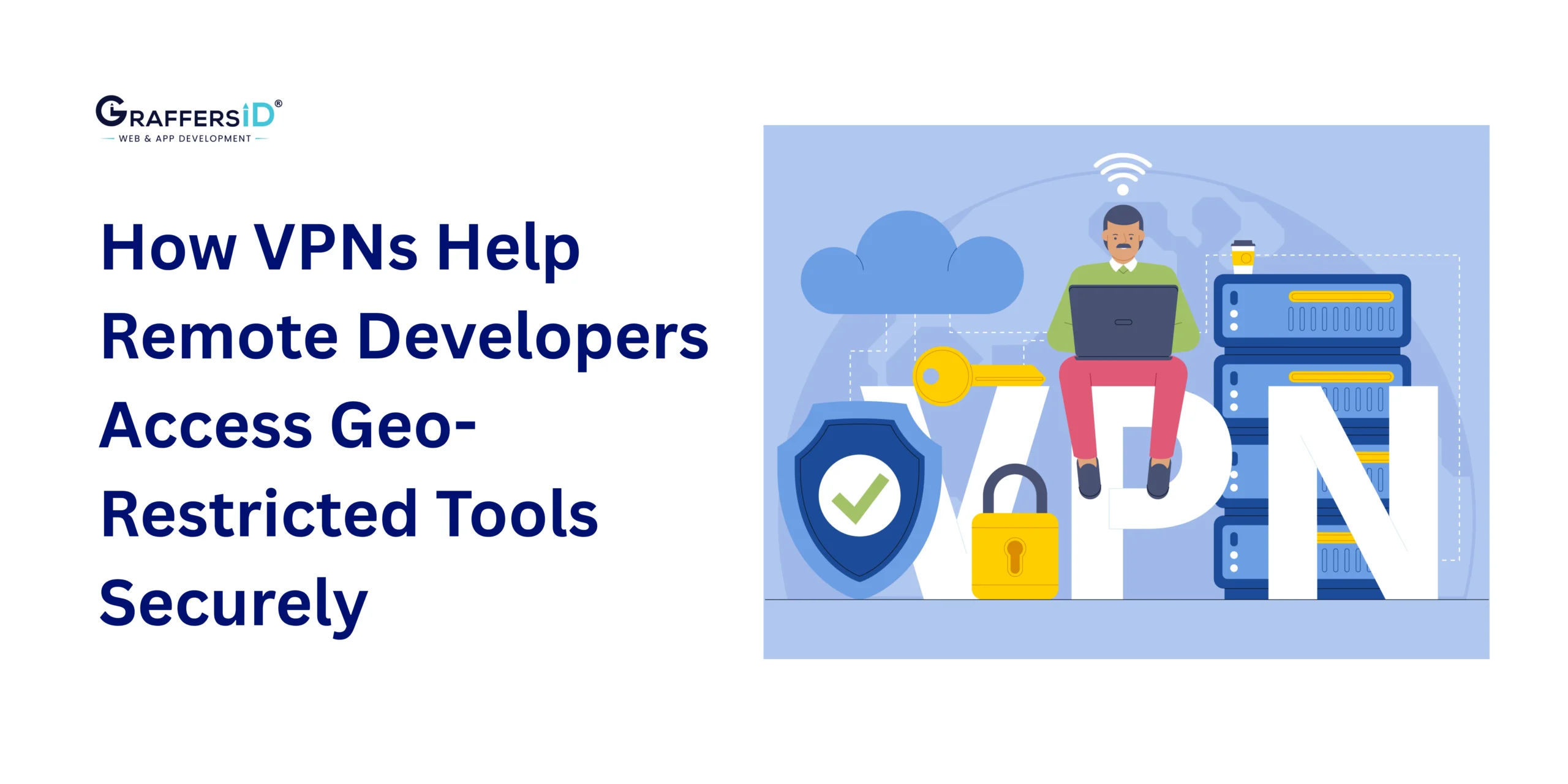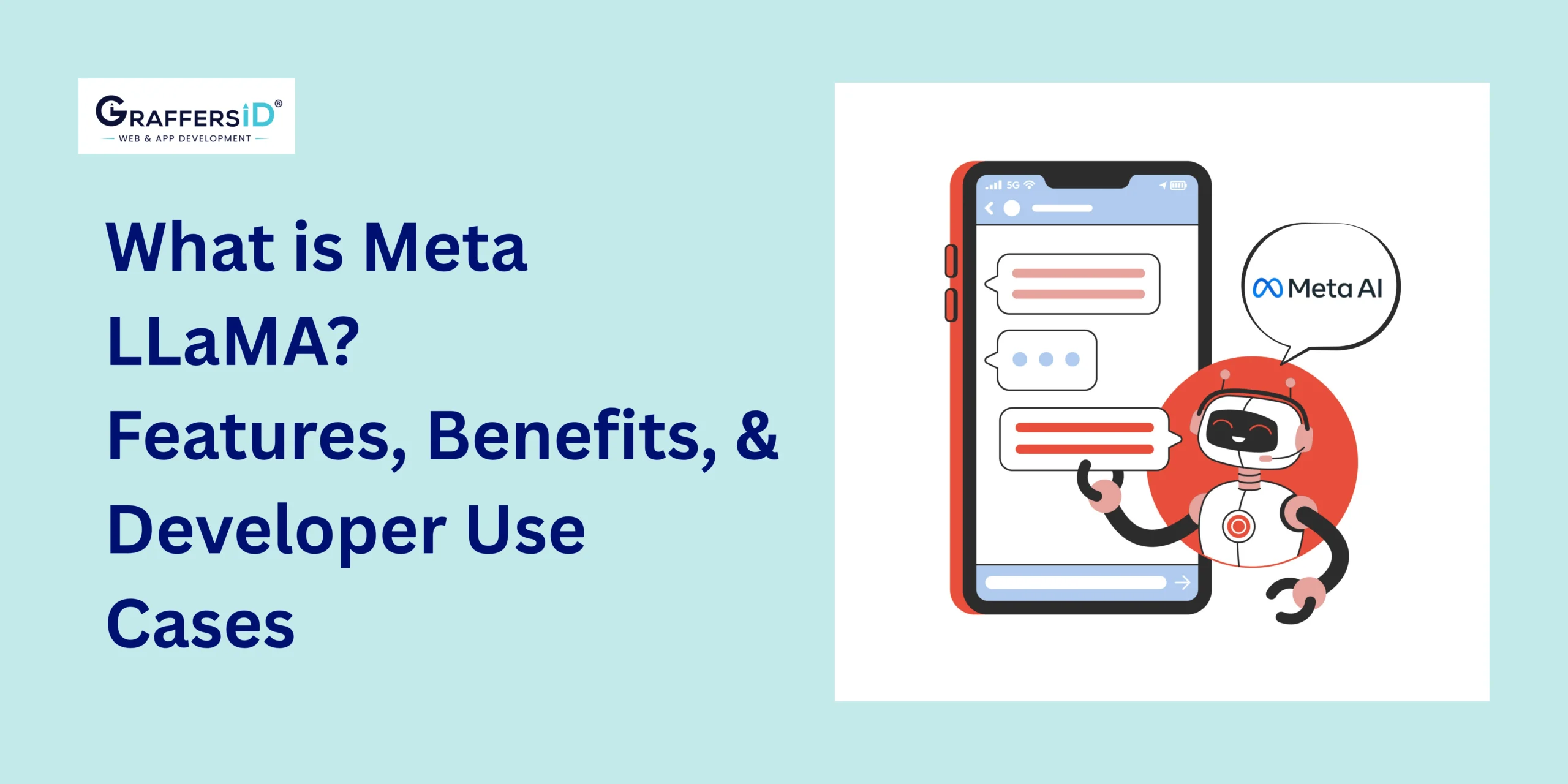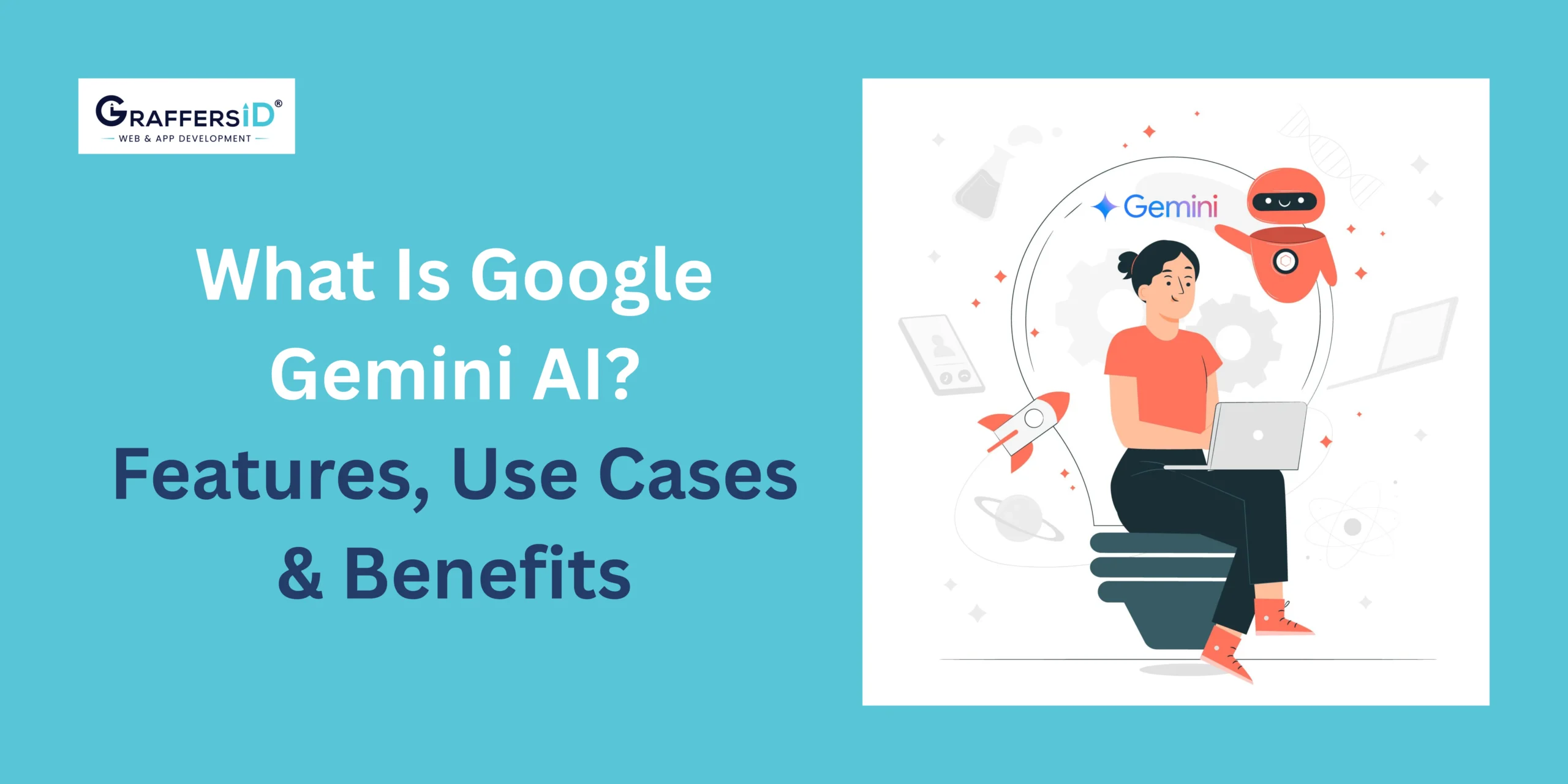Have you dealt with the healthcare industry?
Well, surely you might have and would have also heard about HIPAA compliance. If not, let’s understand what does HIPAA means before, we move ahead on how to develop HIPAA Compliant m-Health App?
HIPAA stands for Health Insurance Portability and Accountability Act that protects the privacy of medical records and personal health information of individuals. It applies to healthcare providers such as doctors, dentists, and pharmacies. HIPAA also covers health insurance companies, government programs, and HMOs.
Now, the question arises do my m-health app need to be I need HIPAA compliant?
The straight answer to this question is, yes! m-Health apps also come under HIPAA compliance as it collects and stores personal health information of the user and shares it with entities dealing in healthcare services like those mentioned above.
Know about how to develop the On-demand Doctor Appointment Booking App?
The biggest reason behind the compliance is the intent to protect the privacy of patients. The data breaches in the healthcare industry have already posed a lot many issues on the financial front. According to IBM report, The data breach hit hard in 2020 costing $7.13 million annually, where 80% of the information resulted in the exposure of personal information of the customers.
Thus, healthcare organizations need to develop HIPAA compliant apps to enhance security and protect customer’s personal information.
But, the question that comes to mind is, “how do I make an app (m-Health app) HIPAA compliant?”
The best way is to hire healthtech software developers to develop a HIPAA compliant app for your business. They help you build a HIPAA compliant healthcare app that will streamline all the administrative healthcare functions, improve efficiency, and ensure that the PHI is shared safely.
If you are planning to build one, scroll down to know more about developing a HIPAA compliant healthcare app!
Read Also: Build Video Streaming Website like Netflix
Four Crucial Rules to Develop a HIPAA Compliant m-Health App
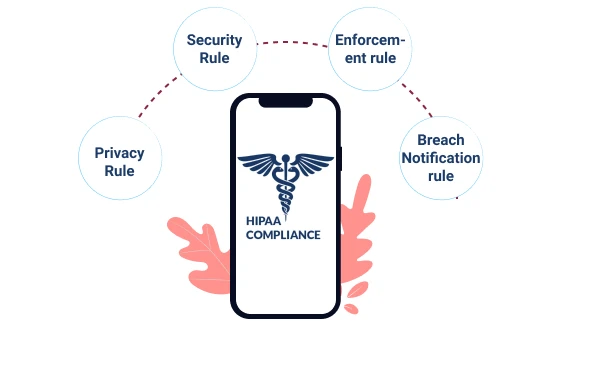
You need to follow the four most important rules to make a HIPAA compliant m-Health app that is:
1. Privacy Rule
The privacy rule mandates the protection and privacy of all health information that is individually identifiable. It sets rules to control and protect health information in any form or medium.
2. Security Rule
Security rule is concerned with the security of electronic medical records (EMR) and addresses the issues related to the technical aspect of protecting electronic health information. It considers security at three levels that include:
- Administrative security- Here the responsibility of securing the information lies on an individual.
- Physical security- It is concerned with providing security to electronic systems, equipment, and data.
- Technical security- It is concerned with authentication and encryption used to control access to data.
3. Enforcement Rule
HIPAA enforcement rule comes from the HITECH act that expands the scope of HIPAA rules related to the privacy and security of individual data. It further contains the penalties and increased reach for the violation of HIPAA rules.
4. Breach Notification Rule
HIPAA breach notification rule also comes from the HITECH act that requires entities and their business associates to report breaches of PHI to affected individuals, HHS, and media within 60 days of breach discovery.
Read Also: Create an App like Airbnb?
What is the Significance of these Rules for the m-Health App Developers?
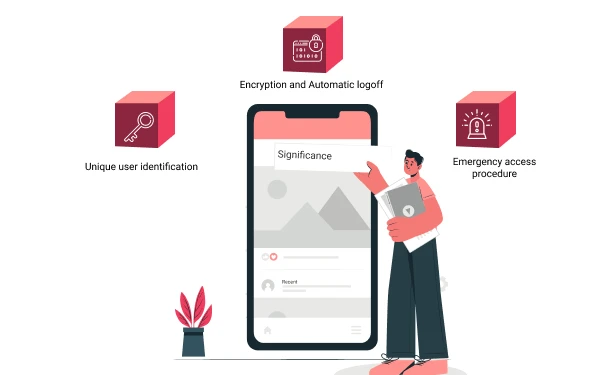
All these rules are of great importance to the developers as they are concerned with safeguarding the technical and physical information related to customers and organizations involved.
Here physical safeguards include the protection of the backend, data transfer networks, and user devices like iPhones or any other devices on iOS or Android. These could be stolen, compromised, or lost by accident.
Apart from this, the developers need to ensure the app’s security by enforcing regular authentication to enhance safety without compromising on user-friendliness. You can allow fingerprint authentication for the users that will be easy for them and will also protect the information in case the device is stolen or lost.
However, the user shouldn’t store any PHI on the memory card as they are vulnerable to security risks due to the lack of strong access permission. To make an app fully compliant with HIPAA, you need to ensure that the data is fully encrypted so it cannot be accessed easily by anyone in case the device is lost or stolen.
It comes under the technical aspects, where the developer focuses on encrypting the data stored in the device by considering the following:
- Unique user identification
- Emergency access procedure
- Encryption and Automatic logoff
Another important thing that you must keep in mind is to never send PHI data in push notifications and leak it on backups and logs. This brings us to the must-have features of a HIPAA compliant app that we have discussed in the section below.
Let’s have a look!
Read Also: Create your First iPhone App?
Must-Have Features of a HIPAA Compliant m-Heath App
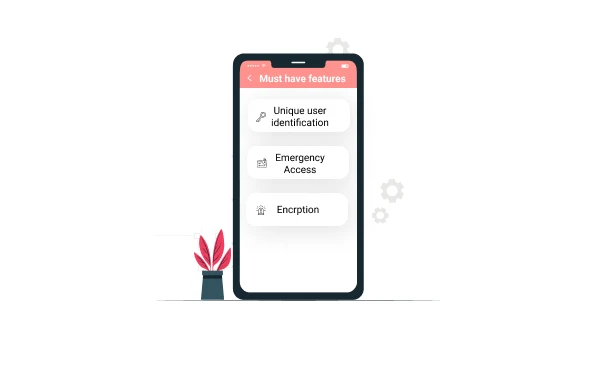
When it comes to develop HIPAA Compliant m-Health App, there are a few common features that we have already pointed out in the section above. Here are must-have feature that need to include the following:
1. User Identification
As we discussed the authentication of users above, you can introduce a PIN, password, or level it up by implementing a biometric identification like a figure print or smart card.
2. Emergency Access
At times of natural emergencies, essential services usually face disruptions, make sure you implement a solution to address the issue of emergency access.
3. Encryption
Encryption is the most crucial need for protecting the PHI data, which is stored on the device or being transmitted. However, when you use services like Google Cloud or AWS, you get the end to end encryption as it runs a transport layer security 1.2.
Apart from this, automatic logoff is crucial from the perspective of protecting the data from being stolen in case the user has lost the device.
How to Develop HIPAA Compliant m-Health App?
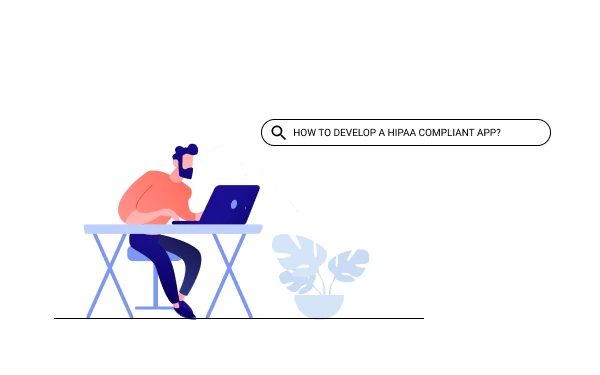
Hire Dedicated Healthcare Developers
The very first step to develop HIPAA Compliant m-Health App is to hire dedicated remote developers with relevant experience who can help audit your system. Avoid taking help from freelancers as they may not have all the resources when it comes to developing such an app.
Evaluate Patient Data and Eliminate Risks Involved
After you consult and hire dedicated healthcare developers, move ahead with evaluating the patient’s data and find out what comes under PHI. After you identify the PHI data, analyze what you can avoid storing on the mobile app.
This way, you can store only the relevant information thereby saving yourself from leaking anything unnecessarily. Also, write a clear privacy policy so you can adhere to the industry standards.
Want to know Is An App Better Than A website?
Encrypt the Data
Now comes the time to encrypt the data after you have figured out crucial information to be stored or transmitted through the device.
However, we have already discussed the need for it in the must-have features section above and you have to consider it. Use App transport security that will link mobile apps to back-end servers on HTTPS to encrypt the PHI data. It will help prevent man-in-the-middle attacks.
Moreover, the data is stored in hash values that further safeguard it from any attack.
Strengthen the Environment
When it comes to maintaining the safety and security of the app, don’t send a push notification that contains PHI as they are not safe.
Make sure that the local session of the app should be timed out after a specific period. The user must make sure to isolate the app that contains all the crucial data from other apps on the smartphone.
In case if the user is using an iOS, make sure to store your encryption keys for which they can employ a protected enclave.
Resort to Security Testing
After you have made sure that the environment for the HIPAA compliant app is apt, move forward with security testing. You can carry out static as well as dynamic application tests to ensure security. Resort to a third-party audit and get it checked by a HIPAA expert that will get through all the documentation. The expert may conduct a few penetrations tests to spot the vulnerabilities.
So, this was about HIPAA compliant apps that will soon be the prime demand, owing to the deep impact that the coronavirus pandemic has left on the world. Thus, more and more people would be resorting to digital apps and the companies developing these apps will have to focus on compliance adherence.
So, when you hire dedicated healthcare developers, make sure they understand the nuances of HIPAA compliance well and implement them in the app.
We hope you found the blog informative and useful. If such topics pick your interest, we will be back with another interesting topic soon!


